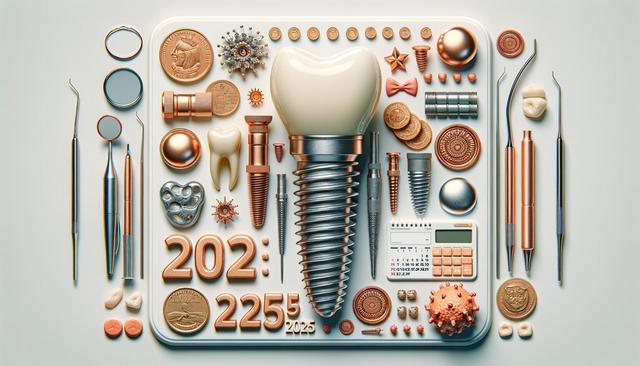What Are Dental Implants and Why Are They Used?
Dental implants are titanium posts surgically placed into the jawbone to act as artificial roots for replacement teeth. These implants provide a durable, long-term solution for individuals who have lost one or more teeth due to injury, decay, or disease. The appeal of dental implants lies in their ability to mimic natural teeth in both appearance and function, offering a stable base for crowns, bridges, or dentures. Unlike removable dentures, implants are fixed in place, which helps preserve bone density and facial structure over time.
Patients often choose implants for their functional benefits, including improved chewing ability, enhanced speech, and greater comfort. Additionally, dental implants can improve self-confidence by restoring a natural-looking smile. However, the decision to pursue this treatment involves considering several factors, one of the most significant being cost.
Factors Influencing Dental Implant Costs in 2025
The cost of dental implants in 2025 can vary widely depending on multiple elements. These factors influence the final price tag and can differ from one patient to another:
- Location: Urban areas or regions with higher living costs may reflect higher dental service fees.
- Experience of the provider: Specialists with extensive experience or advanced credentials may charge more for their services.
- Type of procedure: A single-tooth implant generally costs less than full-mouth restorations or complex bone grafting procedures.
- Materials used: The quality of the implant material, abutment, and crown can impact pricing.
- Diagnostic and preparatory procedures: X-rays, CT scans, extractions, or sinus lifts may add to the total cost.
Each of these elements plays a role in shaping the overall expense, underscoring the importance of a personalized consultation with a dental professional.
Average Price Range for Dental Implants in 2025
As of 2025, the average cost of a single dental implant in the U.S. typically ranges between $3,000 and $5,000. This estimate includes the implant post, abutment, and crown. However, it is important to recognize that this is a generalized figure and that actual prices can be higher or lower based on individual cases. For example:
- Single-tooth implants: $3,000–$5,000
- Implant-supported bridges: $5,000–$15,000
- Full arch replacements (All-on-4 or All-on-6): $20,000–$50,000 per arch
These figures typically do not cover additional procedures like bone grafting or imaging, which can add $500 to $3,000 to the total treatment cost. It’s also worth noting that some dental practices may offer payment plans or financing options to help make implants more accessible.
Insurance and Financing Options
Dental insurance coverage for implants in 2025 remains limited but is gradually improving. Some plans may cover a portion of the procedure, especially if the tooth loss was due to an accident or medical condition. However, many standard dental insurance policies still classify implants as cosmetic and provide little to no reimbursement. In cases where insurance contributes, it usually covers only specific parts of the procedure, such as the crown or preliminary evaluations.
For those without sufficient insurance coverage, financing options are available through dental providers or third-party companies. These include:
- Monthly installment plans offered by dental clinics
- Healthcare credit cards with promotional interest rates
- Personal loans or lines of credit
These financial tools can ease the upfront burden, allowing patients to manage costs over time. It is crucial, however, to review all terms and conditions before committing to a financing plan to avoid unexpected interest or fees.
Choosing a Provider and Planning for the Expense
Selecting a qualified provider is essential to ensuring both the success of the procedure and the value of the investment. When evaluating dental professionals, patients should consider:
- Credentials and training in implant dentistry
- Years of experience performing implant procedures
- Patient reviews and before-and-after case studies
- Transparency in pricing and available payment options
Planning for the financial aspect of dental implants involves more than just comparing prices. Patients are encouraged to schedule consultations with multiple providers, request detailed treatment plans, and ask about potential additional costs. Understanding what is included in the quoted price—such as consultations, imaging, surgery, and follow-up care—can help avoid surprises later on.
Additionally, patients should factor in the long-term benefits of dental implants. While the initial investment may seem high, implants often last significantly longer than other tooth replacement options, potentially offsetting future dental costs. In this way, implants can be seen as both a functional and financial investment in one’s oral health and quality of life.
Conclusion: Making Informed Decisions About Dental Implants
Understanding the cost of dental implants in 2025 involves recognizing the multiple variables that influence pricing, from provider expertise to geographic location and preparatory procedures. While the upfront cost can be significant, the long-term advantages often justify the investment. By researching providers, exploring financing options, and considering insurance coverage, patients can make informed choices that align with their oral health goals and financial situation. For those considering dental implants, proactive planning and consultation with a qualified professional remain key to a successful and satisfying outcome.



Leave a Reply